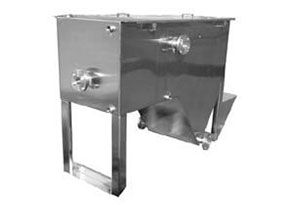Summary
Oil water separators (OWSs) are critical pieces of equipment in many industries, including petroleum, maritime, and manufacturing, designed to removenon-emulsified oil and suspended solids from wastewater before discharge. Proper maintenance is essential to ensure they operate efficiently, comply with environmental regulations, and prevent costly equipment failure or pollution. This article outlines key maintenance best practices for OWSs.
1. Routine Inspection and Monitoring
Consistent, routine monitoring is the foundation of an effective OWS maintenance program.
- Frequent Visual Checks: Operators should check the separator frequently for signs of oil carryover (oil present in the effluent), excessive solids buildup, or unusual noises. The oil/water interface level should be checked to ensure the skimmer is positioned correctly.
- Level Monitoring: Oil and sludge levels must be monitored regularly. If the oil layer becomes too thick, it can restrict flow and be pulled into the discharge. High sludge levels reduce the effective separation volume.
- Flow Rate Verification: Ensure the flow rate into the OWS doesn't exceed its design capacity. Overloading the separator can drastically reduce retention time and separation efficiency, leading to non-compliance.
- Effluent Quality Testing: Periodic testing of the treated water (effluent) is crucial. Test parameters typically include Total Petroleum Hydrocarbons (TPH) or Oil and Grease (O&G) content to confirm regulatory compliance. Test frequency should align with local permits.
2. Timely Oil and Sludge Removal
Allowing separated oil and accumulated sludge to remain in the OWS for too long is the primary cause of operational inefficiency.
- Oil Skimming: Skimmed oil should be removed from the separator before the layer exceeds a thickness that could impede operation. This is typically done using an automatic or manual oil skimmer. Removed oil must be properly stored and disposed of by a licensed waste handler.
- Sludge Pumping: Accumulated sludge (sediment) on the bottom of the separator must be removed before it fills the settling zone. Excessive sludge reduces the overall volume available for separation and can eventually be resuspended and carried out with the effluent. Sludge removal is often a more involved process requiring a vacuum truck and proper permitting for disposal.
3. Cleaning and Component Integrity
Physical cleaning and maintenance of internal components ensure optimal functionality of the separation process.
- Coalescing Plate/Media Cleaning: In most modern OWSs, separation is enhanced by coalescing plates or media. Clogging from solids or biological growth is common. The plates must be periodically removed and cleaned, typically with high-pressure water or a mild, non-emulsifying detergent.
- Sump and Vessel Cleaning: A complete vessel cleaning, often annually or semi-annually, is necessary to remove scale, biofilm, and fine particles that adhere to the walls and components.
- Gasket and Seal Inspection: Check all access ports, hatches, and pump seals for leaks. Degrading gaskets can lead to infiltration or, more seriously, discharge leaks.
- Pump and Valve Maintenance: Inspect and service all associated pumps (e.g., transfer, effluent, or skimming pumps) and valves. Ensure non-return valves (check valves) are working correctly to prevent backflow.
4. Preventing Emulsions and Chemical Compatibility
The effectiveness of an OWS relies on the separation of free oil. Emulsions significantly hinder the process.
- Chemical Review: Introduce only water-soluble, non-emulsifying cleaning chemicals into areas that drain to the OWS. Detergents that emulsify oil (i.e., mix oil and water into a stable solution) will cause the oil to pass directly through the separator.
- pH Monitoring: Maintain the wastewater within the design pH range. Extreme pH levels can sometimes break down the emulsion, but they can also damage the OWS components and violate discharge permits.
- Oil Source Control: Investigate and eliminate sources of highly emulsified or heavy oils, such as hydraulic fluids or machining coolants, or provide pre-treatment for these streams before they enter the main separator.
5. Documentation and Training
Comprehensive record-keeping and a trained workforce are essential for long-term OWS performance.
- Maintenance Logs: Keep detailed logs of all inspections, effluent test results, oil and sludge removal volumes, and maintenance actions performed. This documentation is vital for demonstrating regulatory compliance during audits.
- Standard Operating Procedures (SOPs): Establish clear SOPs for daily operation, monitoring, emergency response, and scheduled maintenance tasks.
- Staff Training: Ensure all personnel involved in the operation and maintenance of the OWS are properly trained on its design, function, SOPs, safety procedures, and environmental requirements.
By consistently applying these best practices—focusing on routine monitoring, timely cleaning, proper waste handling, and preventing emulsions—facilities can maximize the efficiency and lifespan of their oil water separators, ensuring reliable compliance with environmental discharge regulations. Maintaining your OWS isn't just about efficiency; it's a critical component of environmental stewardship.

